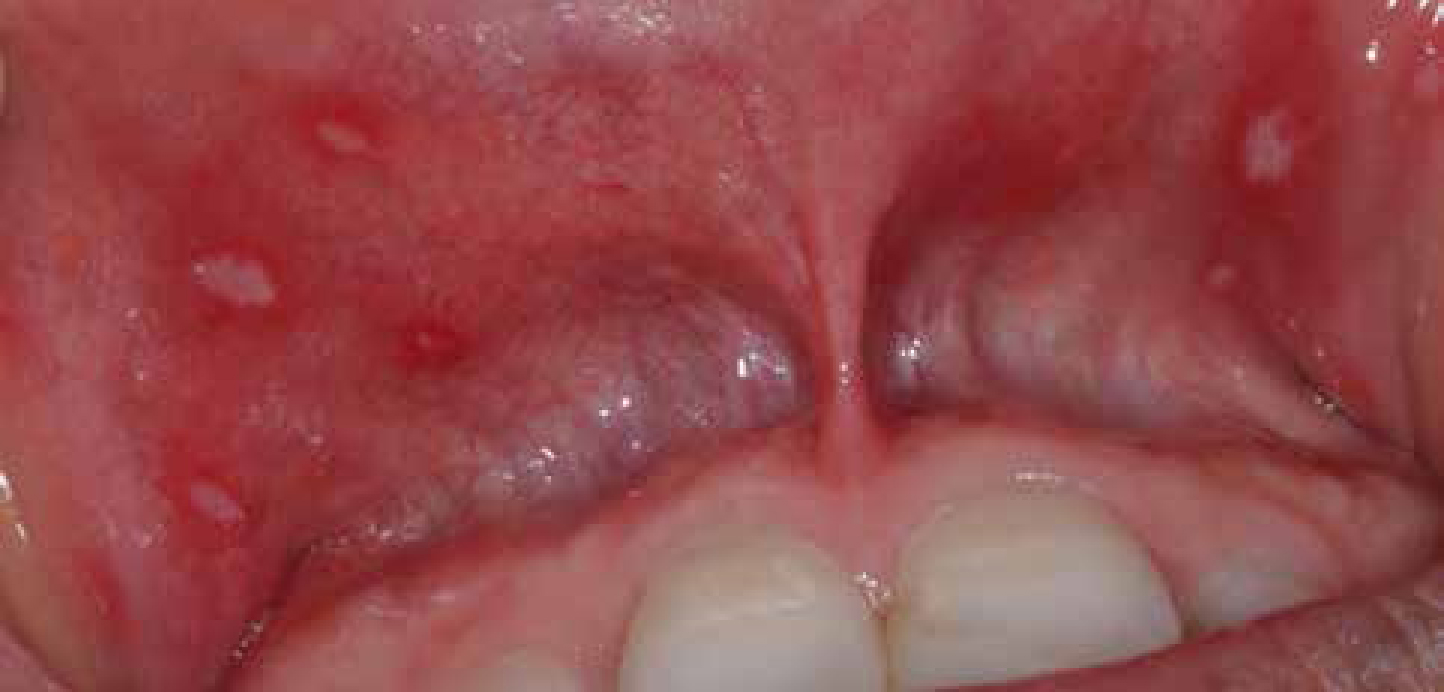Article


A 22-year-old woman presented with painful lesions in the inner surface of her upper lip for 10 days. Clinical examination revealed a few, small, painful, superficial ulcerations (>8 per area and <5 mm in diameter) covered with white pseudo-membrane and with erythematous margins (Figure 1). These ulcerations were not associated with other lesions in the mouth, skin or other mucosae, with no cervical lymphadenopathy or general symptomatology, such as fever and malaise. The patient suffered from a mild iron deficiency, was not on any medication and was a non-smoker and non-heavy drinker.

Q1. Which is the likely diagnosis?
A1. The answer to which is the likely diagnosis?
Taking into consideration the clinical characteristics of the ulcers such as their number (>8 ulcers), size (<5 mm), location (inner labial mucosa), shape and the lack of other lesions or symptomatology apart from pain, the diagnosis of herpetiform ulcers is likely. The ulcers in the primary herpetic stomatitis are also numerous, painful and scattered in all parts of the oral mucosa but are usually accompanied by fever, cervical lymphadenitis and general symptomatology of nausea and malaise, which were not seen in this patient. The ulcers in erythema multiforme are numerous, painful and also appear in young patients but are different from the herpetiform ulcers in the larger variation of the lesion size, shape and often the presence of haemorrhagic crusting of the lips and of target-like skin lesions. Syphilitic ulcers are often asymptomatic and associated with lymphadenitis. Drug-induced oral ulceration was easily excluded as the patient was not on any medication.
Q2. What are the differences between minor and major aphthae?
Their differences are related to their:
A2. The answer to what are the differences between minor and major aphthae?
Minor and major aphthae are both painful recurrent ulcers with different clinical characteristics. Minor aphthae are more common, smaller (<1 cm), located in all non-keratinizing oral mucosa, 5 or 7 in number per time and heal within 7–10 days without scarring. In contrast, the major aphthae are larger (>1–2 cm), seen mainly in the masticatory oral mucosa (gingivae or palate) but with a more aggressive appearance, which sometimes resembles a carcinoma, and with a healing time of more than 2–3 weeks, which sometimes causes scar formation.

